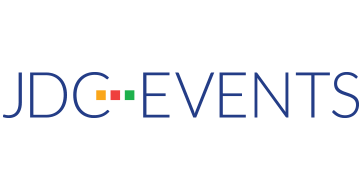
24 Mar How to Get—and Keep—Participants at Virtual Corporate Events
Now that virtual events have become more commonplace, it’s all about how to improve the experience. Whether it’s an all-hands, sales summit, or client retreat, how do you get more participants to your corporate events? How do you engage them once they are there? How do you make it a memorable experience for everyone?
GETTING MORE PARTICIPANTS
With in-person corporate events, participants often looked forward to traveling to a different location, getting out of the office, learning new information, and networking with colleagues and clients. It’s a challenge to replicate these experiences for participants who can be easily distracted by home life or other tasks that are just a click away. The goal, then, is to figure out what your participants need—and want—to log in and stay engaged in a virtual meeting.
As with any event, start by defining its purpose. Are you trying to influence change? Come to some decision? Solve a problem? Strengthen relationships between colleagues and clients? Determining the reason for your event will help you define your target audience. Once you’ve defined your purpose and audience, then tailor your agenda; virtual attendees who feel like programming speaks to them will be more inclined to participate.
Consider your audience when determining the apps you will use—participants who struggle with technology are less likely to stay engaged. A well-designed, aesthetic, and easy-to-use website or landing page can entice participation in the event. Use the site for registration sign-up and post the agenda, complete with links to more information about speakers or other information participants may need or want in advance. Drive traffic to the site with a nurture campaign. Periodic emails and social media postings that share event updates or links to speaker videos can build momentum. Be sure to include branding and the value proposition with all content marketing the event; participants are more likely to sign up if they connect with the message and start to feel the excitement. Also partner with sponsors in your marketing to perhaps reach an even larger audience. As part of your marketing of the event, consider whether specific groups—such as decision-makers, certain clients, or specific departments—need specialized messages.
Experience boxes can also help build excitement—before, during, and after an event. More than just gifts, these custom-curated boxes are integrated with the event agenda. Participants are prompted throughout the event to unbox specific items for specific purposes. Whether it’s recognizing a job well done, playing up a theme, creating a sense of cohesiveness, encouraging a little relaxation, or any number of ideas, an experience box filled with swag, games, and treats can create a lasting impression with participants.
KEEP IT RELEVANT—AND INTERESTING
More than just observers logged in to view an event, attendees who feel they have some sort of role or responsibility are more likely to engage. One way to engage participants very early on is to start with a brief yet captivating icebreaker session. For instance, by using a polling system, you can help colleagues warm up to—and test—the technology. Ask them to weigh in on a question, such as, “Where are you joining from?” or “How is your day going?” and post their answers to a word cloud. This can give participants a quick visual of the scope of the event and make them feel like they are part of something.
Creating a little drama can also heighten participants’ interest. For example, using provocative data or anecdotes to present a company problem or demonstrate a success, and then asking for feedback on solutions to the problem or how to duplicate that win can encourage participants to weigh in.
Along with agenda items designed to engage all participants, consider ways to break down tasks or activities into small, focused groups with specific activities and limited timeframes. Quick breakout sessions that create targeted opportunities for engagement can heighten excitement and keep up the pace of an event.
Of course, any virtual event will move along more effectively with a moderator, someone from the team with an upbeat, professional attitude who is well-versed in the technologies, and knows how to stay on task while corralling participants, as needed.
In the virtual world, it can be difficult to know who is participating. Wherever possible, include introductions and visual cues—photos, name cards, or other identifiers—to help attendees feel a sense of connection with presenters, each other, and event staff. Depending on the size of the event, a real-time log-in display can help participants see who is in attendance.
When presenting information, such as slides, distill the messages down to “need-to-know” data. Keeping it brief can help retain participants’ attention and prevent lag time during the event. The same goes for Q&A sessions—while it can be tempting to answer every question, stick to those that seem most relevant in the time allotted, provide targeted answers, and then include answers to remaining questions as part of the follow-up after the event.
For events lasting more than an hour or two, consider including a break for a physical activity. A quick instructor-led stretching session, improv game, or home scavenger hunt can add a little fun after a particularly intense (or somewhat lackluster) point in the event. Even a shout-out segment or trivia game (around the brand, sponsor, or team) can make for a pleasing break in the action, particularly if well-timed. Whatever the activity, keep it relatively brief to ensure participants who are already tempted by distractions can get back to the program at hand.
Also remember: Virtual is primarily visual, so it’s crucial to ensure there is always something on screen to help guide participants through the event. Between agenda items, display visuals such as the event schedule, sponsor information, speaker background, company trivia, or a countdown to the next session.
DON’T FORGET TO FOLLOW UP
Timely follow-up is just as important with virtual corporate events. As soon as possible, send any promised materials, lessons learned or best practices shared, useful notes, action items, or deadlines for deliverables. As part of follow-up activities, encourage feedback from participants—what worked, what didn’t, what ideas do they have for improvement?
For a big finish, unveil one last item from the experience box. Whether it’s a mystery item in the box, or a redemption code for something spectacular (perhaps courtesy of a sponsor), it’s a thoughtful and engaging way to leave a lasting impression of the event.

Shafer Busch is JDC’s Senior Manager of Portfolio and Strategy. Her role is about listening, taking notes, and rapidly adapting to changing needs. That’s how she brings people together while working under tight deadlines—across states and nations.
After earning her Masters in Ethics, Peace, and Global Affairs, Shafer spent seven years working on events in the U.S. and Middle East. As COO and director of events at an international nonprofit, she created events to entertain, inspire ideas, and empower voices. A specialist in working with policymakers, diplomats, and entertainers toward a common goal, Shafer’s accomplishments include bringing together an impressive list of who’s who. Her portfolio includes: an annual awards dinner for individuals and organizations that shape social and public policy, a dinner and conversation for U.S. government and intelligence leaders and creative minds from Showtime’s “Homeland” series, and a student discussion event about women in film with the Oscar-winning director of “The Hurt Locker” and “Zero Dark Thirty.”



